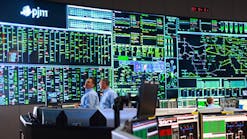Three to four weeks into the pandemic-caused national work shutdown, we began to see reports of load reduction trends from major North American power markets. Nearly every transmission and independent system operator reported loads at least 3% to 8% below normal. Ironically, one of the many energy sector businesses immediately hit was energy efficiency programs involving worker access to public housing, individual residences and even commercial buildings. While Wood Mackenzie, a prominent energy industry consulting firm, predicted that the economic impacts of COVID-19 would go on for 18 months, there’s a solid argument that the implications for the energy efficiency sector will be positive long-term, once safe work rules are established.
The power industry will be evaluating the impact of COVID-19 and potential future pandemics indefinitely in light of the once unimaginable broad-sweeping and rapid effects demonstrated before us. Obviously, we will assess potential risks, but we also must identify opportunities for better serving our communities. We are obtaining a new sense in real time of how national and state level directives can affect load, demand curves and usage patterns. Many of the energy sector impacts we are witnessing are having a huge effect on our workforce. As an example, experts in the energy efficiency arena, which employs roughly 2.4 million people, reported that private companies and utilities discontinued a high percentage of their work due to the pandemic.As if reality is not scary enough, we are also seeing some eyebrow raising predictions of what might happen down the road. One industry pundit predicts that we may see major blackouts and local network meltdowns this summer if stay-at-home orders continue. Below I offer a far less technical and, hopefully, somewhat reassuring glass is half full prediction for what may happen in the EE sector going forward.
The 2020 U.S. Energy & Employment Report indicates that EE had the highest jobs growth in the energy sector last year. Moreover, the entire energy sector created jobs 50% faster than the rest of the economy. The Energy Futures Initiative and the National Association of State Energy Officials, who are jointly responsible for the above report, have indicated a strong interest in getting Americans back to work in the energy sector as soon as safely possible. The workplace rules now being issued for reopening the economy should allow much of the energy efficiency work to resume relatively soon. Bellwether entities in the sector already are announcing plans to continue significant projects.
While always active in the EE sector, utilities collectively have increased their annual energy savings by 20% since 2015 according to the American Council for an Energy-Efficient Economy (ACEEE). Temporarily sidelined weatherization and other in home and workplace programs offered by utilities and their contractors may resume a little more slowly but could take on significantly greater importance. The repercussions from COVID-19 may create new usage patterns and needs across the board from residences to office, retail, education, healthcare, hotels and restaurants, institutional and commercial/industrial space. First, given our downtime and its potentially extended economic effects, finding cost reductions for customers will become even more of a priority. Second, what we’ve been through and may continue to experience could increase the need for flexibility and adaptability in our homes, schools, and businesses. Unfortunately, we may need to have the capability to alter power usage to reflect changing social distancing guidance.
Energy efficiency today is far more than weatherization. Some of our newer tools in the field will help us respond to greater complexity in usage patterns. For example, building automation systems will help utilities and customers personalize facilities to lower demand-side energy usage and reduce ownership and operating costs even as usage restrictions change. Further, utilities are employing artificial intelligence and machine learning technology to interpret customer meter data and optimize the services provided as well as realize network and program efficiencies. This technology will help us adapt facilities ranging from factories to hotels to schools and homes to maximize energy efficiency under changing conditions.
The COVID-19 pandemic has created a new reality for Americans. We see some sense of normalcy on the horizon, and hopefully, the business sectors that drove our economy before such as the energy sector, will start to thrive again. The energy efficiency segment should receive increased attention as the importance of minimizing electricity costs for our customers takes front stage, and building as much flexibility and adaptability as possible into electric systems becomes more relevant than ever before.


